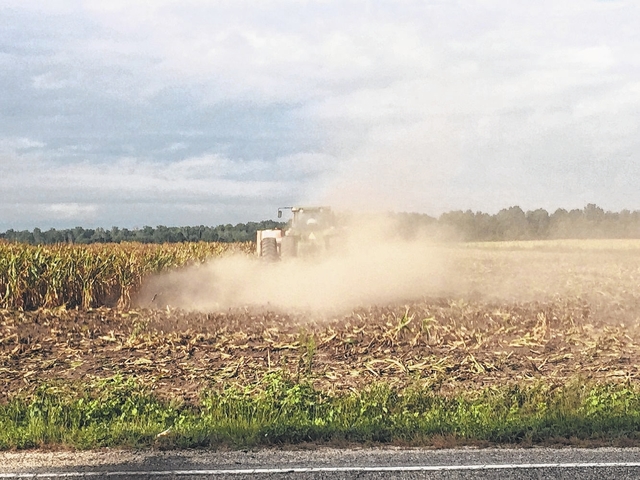BLACKVILLE — Corn growers in South Carolina escaped the wrath of early October’s epic rainfall, but the damage had already been done. Long before the brutal storm released its first drop, a severe summer drought and accompanying heat wave scorched cornfields throughout most of the state.
As a result, farmers lost tens of millions of dollars, thousands of acres of planted corn were destroyed and much of the corn that did survive produced disappointing yields and quality.
So now that 2015 has come and gone, what’s in store for corn growers in 2016?
“After last year’s misfortunes, there is a lot of disappointment and uncertainty about this year,” said David Gunter, Clemson Extension’s feed grain specialist who is based at the Edisto Research and Education Center near Blackville. “Not only did we have damaged yields, but the markets crashed last year. Because of all this, corn growers are facing some tough decisions this year as they attempt to find ways to recoup some of their losses.”
In the southern portions of the state, corn is typically planted in the last half of March. In the Midlands, it is planted in April. And in the Piedmont, it is planted in early May. But in many regions of South Carolina, pond-sized pools of standing water remain on cornfields more than three months after the monster storm. If these don’t recede in time for planting season, a lot of valuable acreage will be unusable.
“Ideally, we’d love to have a relatively dry winter to get some of this water out of the fields,” Gunter said. “And nature has ways of helping out. When the maple trees start turning red, they really pull up a lot of water. Flooded areas can dry up in a hurry. Hopefully, growers are due for some good luck — from wherever they can get it.”
Assuming winter cooperates, Gunter said a mild, moist spring followed by a relatively mild summer that includes 3-5 inches of rain per month will create ideal growing conditions for corn in 2016. If all goes well, harvests will begin in August and run through the end of September.
“It’s not like we don’t want any rain at all,” Gunter said. “We need moisture to activate the herbicides and to get the corn to stand up at the same time. We just won’t be able to handle another deluge. But it’s hard to say what the weather is going to do. It seems more difficult to predict every year.”
Gunter said that many corn growers will devote more of their acreage this year to soybeans, which have relatively low upfront costs, such as those in seed and fertilization.
“I keep hearing that ‘we’re just going to plant beans,’ ” Gunter said. “Farmers will try to cut costs as much as they can. Instead of planting 1,300 acres of corn this year, a grower might plant 600 acres and use the rest for beans.”
Last year, corn growers were in good shape through May and most of June. But then the dry, hot conditions suddenly appeared and stubbornly refused to go away.
“The corn had really good growing conditions early on and was not acclimatized to the intense heat that followed,” Gunter said. “Because of this, we lost a lot of yield — particularly in the dryland fields — in a very short time. And even fields that had irrigation still suffered damage. When you’ve got these big pivots covering hundreds of acres, it takes a long time to complete just one revolution. The corn needed water every three days or so, and some of these systems couldn’t manage it.”
Regardless of what happened in the past, the future is not all doom and gloom. Clemson hopes to receive $2.5 million from the South Carolina Legislature that will help it expand research and outreach programs that can help growers recover from the 2015 mess, and Gunter believes that farmers in South Carolina have the will and fortitude to rebound from almost anything. But severe droughts, heat and torrential rainfalls – especially occurring side by side in the same year – make it tough on everyone.
“The good thing about growers is they are optimistic and have short memories,” Gunter said. “Last year was last year. This year offers a fresh start. The farmers of South Carolina are used to making tough decisions. And they are stubborn and proud. Regardless, let’s hope we never have another year like 2015.”




